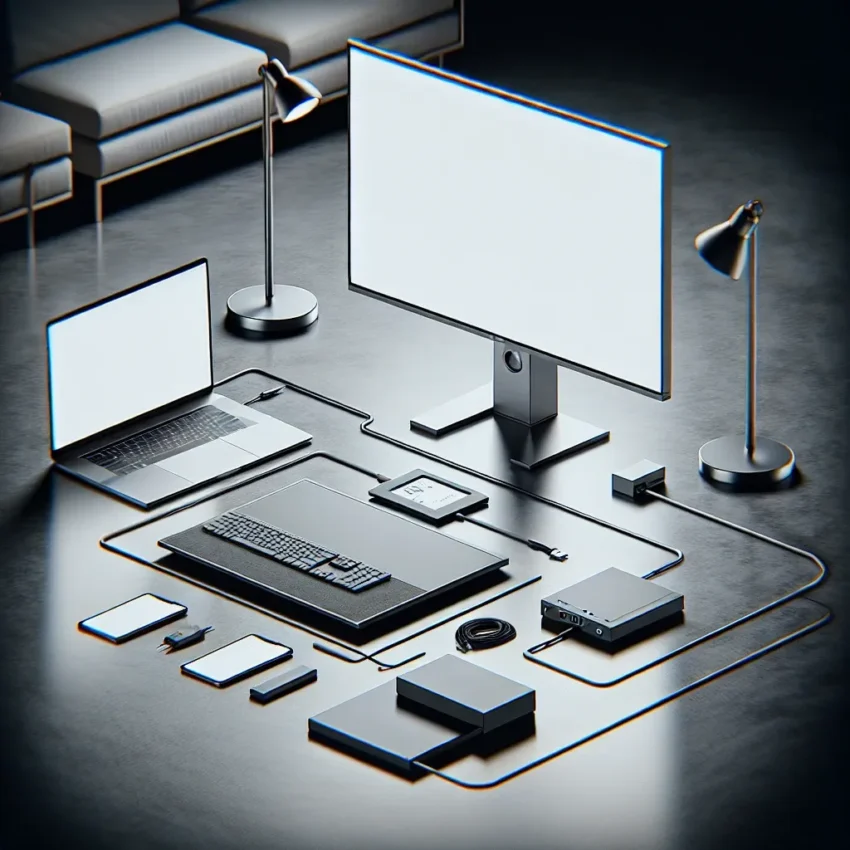In the rapidly evolving world of technology, innovation continues to streamline our experiences and enhance productivity. One such advancement is the detachable LED monitor. These versatile displays allow users the flexibility to detach the screen from its base, providing a myriad of benefits and usage scenarios. Let’s delve into the world of detachable LED monitors to understand their defining features, advantages, and how they stand against traditional monitors.
Key Features of Detachable LED Monitors
Detachable LED monitors come packed with innovative features that set them apart from traditional monitors. Below is a table highlighting some key features:
| Feature | Description |
|---|---|
| Portability | Can easily be moved and used in different locations |
| Versatility | Can be connected to various devices like laptops, desktops, and tablets |
| Touchscreen Capability | Many models offer touchscreen functionalities for enhanced interactivity |
| Battery Operated | Some detachable monitors have built-in batteries for power on the go |
| High Resolution | LED technology offers crisp and vibrant visuals |
| Multiple Connectivity Options | Includes HDMI, USB-C, and sometimes wireless connections |
Advantages of Detachable LED Monitors
Detachable LED monitors bring numerous benefits to the table:
1. Enhanced Productivity
Having a portable, secondary screen can significantly boost productivity by allowing more screen space for multitasking. Professionals can use these screens to present data, manage complex tasks, or simply enhance their workflow with dual-screen setups.
2. Versatility in Use
These monitors can be connected to various devices, including laptops, desktops, and tablets. This versatility ensures you can use them in a variety of settings, whether you are at home, in the office, or on the go.
3. Portability
The ability to detach and carry around your monitor provides unprecedented mobility. Unlike traditional monitors, you can take your screen with you, making it an excellent choice for frequent travelers or remote workers.
4. Improved Comfort
Some models come with adjustable stands and ergonomic designs, offering enhanced comfort during extended use. Users can adjust the height, tilt, and orientation to fit their posture, reducing the risk of strain or injury.
5. Space-Saving
In small workspaces, detachable monitors prove invaluable by saving space. When not in use, they can be easily stored away, freeing up desk space for other activities.
Comparing Detachable LED Monitors with Traditional Monitors
While both traditional and detachable monitors serve the fundamental purpose of displaying visual content, their configurations and features differ significantly. Below is a comparison:
| Aspect | Detachable LED Monitors | Traditional Monitors |
|---|---|---|
| Portability | Highly portable and can be used on the go | Generally stationary and fixed |
| Versatility | Can connect to multiple devices and used in various environments | Primarily fixed to a single setup |
| Setup Flexibility | Easy setup and disassembly | Requires a more permanent setup |
| Cost | Generally more expensive due to additional features | Typically less expensive |
| Space Utilization | Ideal for small spaces due to compact design | Occupies more desk space |
| Battery Operated | Some models include battery options for use without direct power | Always requires a power connection |
Choosing the Right Detachable LED Monitor
When selecting a detachable LED monitor, consider the following factors to ensure it meets your needs:
1. Size and Resolution
Depending on your work requirements, you might prefer a larger screen size for better visibility or a higher resolution for more detailed imagery.
2. Connectivity Options
Ensure the monitor offers the connectivity options you need, such as HDMI, USB-C, or wireless capabilities, to match your devices.
3. Battery Life
If you plan to use the monitor without direct power, consider models with built-in batteries and longer battery life to avoid frequent recharges.
4. Weight and Build Quality
For portability, a lightweight and durable build is essential. Look for monitors with robust construction that can withstand regular movement.
5. Additional Features
Features like touchscreen capability, adjustable stands, and ergonomic design can further enhance your user experience. Evaluate these based on your specific needs and preferences.
Use Cases for Detachable LED Monitors
Detachable LED monitors are suited for various scenarios that require flexibility and adaptability:
1. Business Professionals
Executives and business professionals can benefit from portable monitors for presentations, meetings, and multitasking, whether in the office or on the road.
2. Students
Students can utilize these monitors for studying, research, and collaborative projects, especially in remote learning environments.
3. Gamers
Gamers can use detachable monitors to expand their gaming setup, providing additional screen space for immersive experiences.
4. Creative Professionals
Graphic designers, video editors, and photographers can use these monitors to view and edit content with greater precision and flexibility.
Challenges and Considerations
While detachable LED monitors offer notable advantages, there are certain challenges and considerations to keep in mind:
1. Cost
Detachable monitors typically come at a higher price point compared to traditional monitors due to their advanced features and portability.
2. Durability
Frequent detaching and moving can wear down the monitor over time. It’s crucial to handle them with care and choose models with durable builds.
3. Limited Power Supply
Batteries in some detachable monitors may have limited power capacity and require regular recharging, especially during continuous use.
Conclusion
Detachable LED monitors represent a significant leap in display technology, offering versatility, portability, and convenience that traditional monitors cannot match. They cater to a wide range of users, from professionals and students to gamers and creatives, enhancing productivity and user experience. By understanding their features, benefits, and potential drawbacks, you can make an informed decision about whether a detachable LED monitor is the right choice for your needs.

